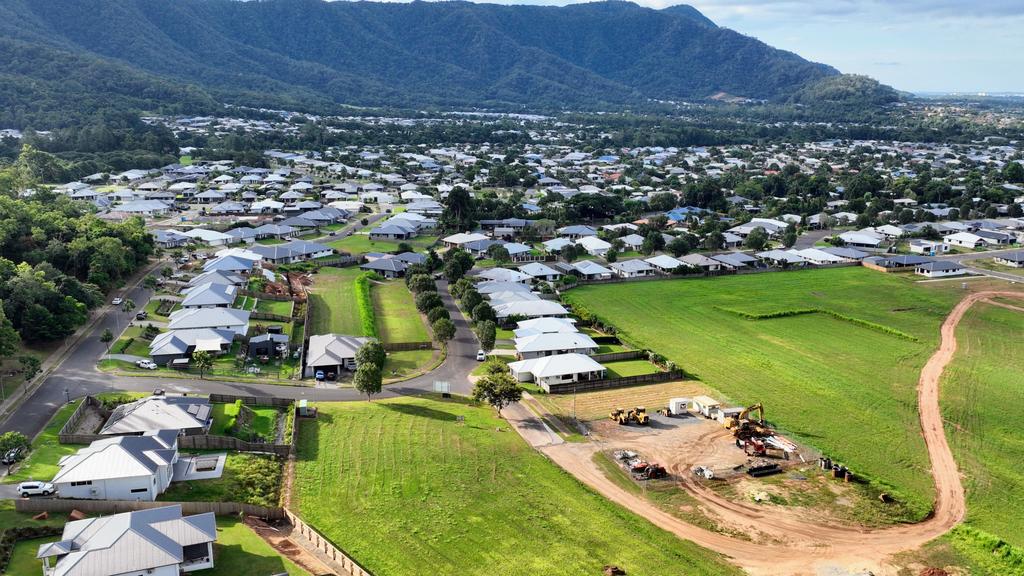Rental, housing affordability to worsen without more homes

New homes and house lots under construction at Sugarworld Estate, a new housing development at Edmonton, south of Cairns. Picture: Brendan Radke
Southeast Queensland’s housing crisis has intensified, with the region now facing a shortfall of 25,000 rental properties due to the fewer number of homes being approved, according to new data from RPM.
The firm’s latest quarterly report highlighted the need for more greenfield land for housing to be released, while town planner Martin Garred has called for greater densification in the form of townhomes and duplexes, known as the “missing middle”.
RPM’s Queensland managing director Peter Neale said the region is facing the unique combination of strong interstate migration on top of the same pressures facing the rest of the country – higher build costs, inflation and rising rates.
“This shortage has been compounded by record interstate migration to Queensland last year that drove the largest population growth of any Australian state in 2022, and it will become even more critical with the expected spike in international migrants over the short term,” Mr Neale said.
“Market forces at the moment are colliding simultaneously to exacerbate the critical housing shortage in southeast Queensland, which is further fuelled by a continuation of poor economic factors.”
“The rental market particularly is showing an increasing shortfall that is putting more pressure on tenants and new homebuyers.”
Despite housing construction reaching record levels over the past year, housing approvals in Queensland fell 15.4 per cent over the 12 months to April this year. The under-supply of homes in Southeast Queensland is unlikely to improve without a co-ordinated approach to supply delivery.
“The solution is to increase supply given last year has demonstrated that there is no shortage of people seeking to purchase – they are largely constrained by affordability,” Mr Neale said.
“Buyers will become more confident once rate increases subside. In the meantime, there needs to be a concerted effort by governments and councils in southeast Queensland to cut red tape and get approvals through faster.
“This is a critical enabler.”

Town planner Martin Garred. Picture: Supplied
While the latest federal budget highlighted several initiatives to improve the number of homes being added to the housing pool, town planner and fellow of the Winston Churchill Memorial Trust, Martin Garred, said some of the promises may be difficult to deliver on.
The co-founding director of boutique town planning firm Civity welcomed the various investments to help combat the housing crisis, including Australia’s National Housing Accord, National Housing Finance and Investment Corporation and the Thriving Suburbs Program, but noted the changes must be done correctly.
“It also promises to improve land-use zoning as part of its immediate actions,” he said.
“I believe this has merit, but only if done right. The government should allow a variety of duplexes, triplexes, quadplexes, fonzi flats, and so forth, to be developed indiscriminately, citywide. This is already practised in major cities worldwide.”
Mr Garrad described national cabinet’s agreement on a new housing approach, including a review of infrastructure investment, increase of housing supply and the establishment of a vision to ensure sustainable city growth, as a “breath of fresh air”.
“It agreed these meaningful reforms were paramount,” he said.
“This change is a breath of fresh air. For decades, the ideological concept of the“Great Australian Dream” of a detached house and backyard has exacerbated the housing crisis. It drove policy that permitted exclusive construction of stand-alone houses on residential land.
“I urge all levels of government involved with the new approach to housing not to waste a golden opportunity for change.”







